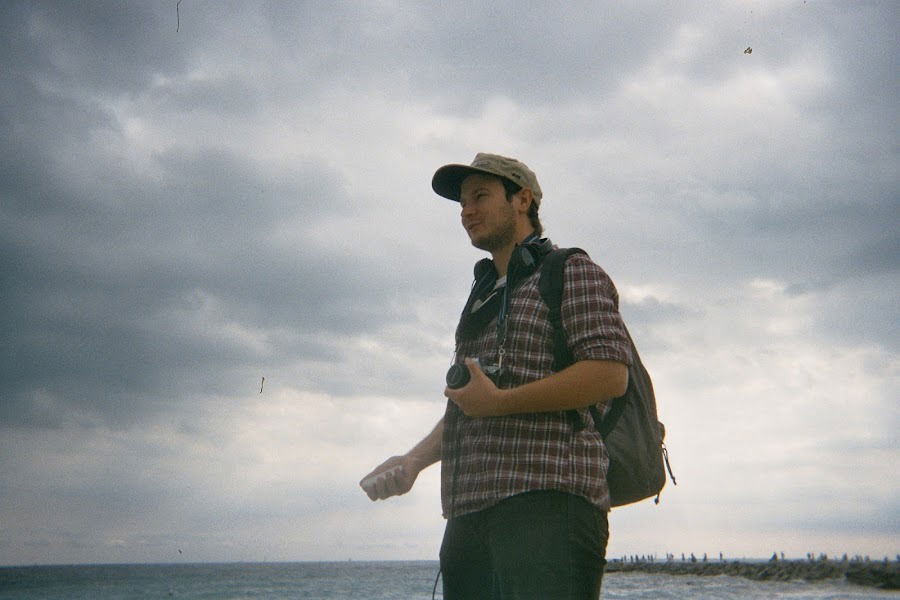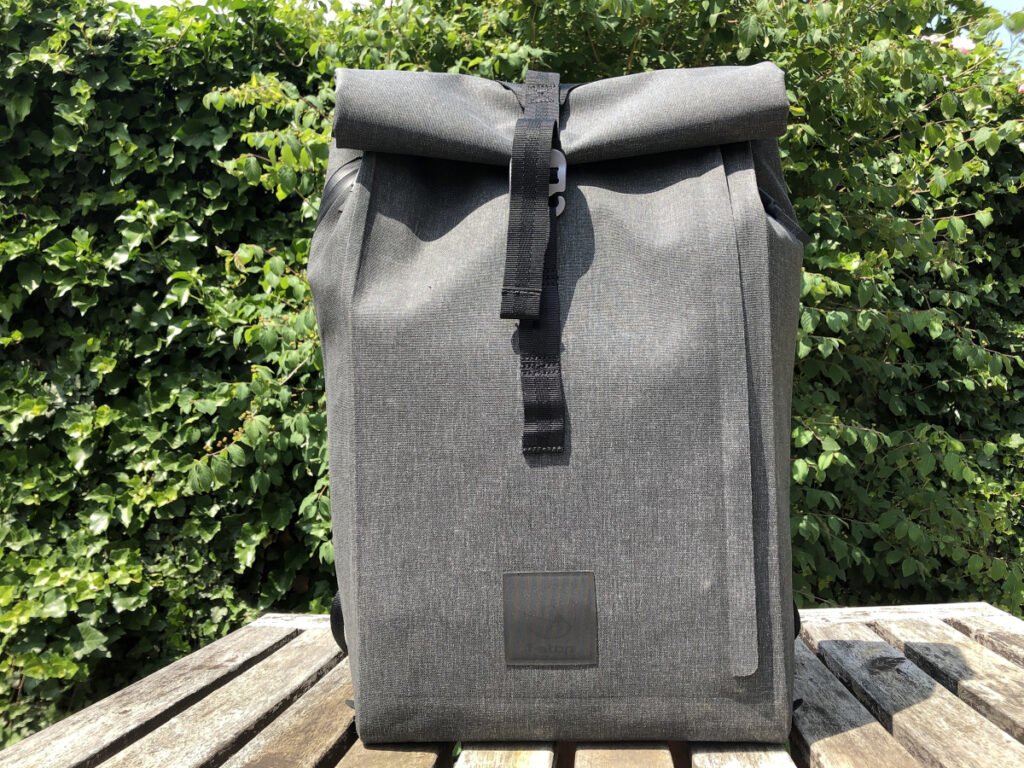The best entry-level DSLR allows you to capture fantastic photos with ease. A beginner DSLR should be easy to use. It needs to have excellent imaging powers to fuel your enthusiasm for photography. And it should have extra features to help develop your skills.
The Canon EOS Rebel T8i is the best entry-level DSLR. It produces beautiful images. You get a wide ISO range and a reliable autofocus (AF) system to help you capture great shots. And you can even shoot fabulous 4K videos. It’s a brilliant DSLR camera any beginner will love to use.
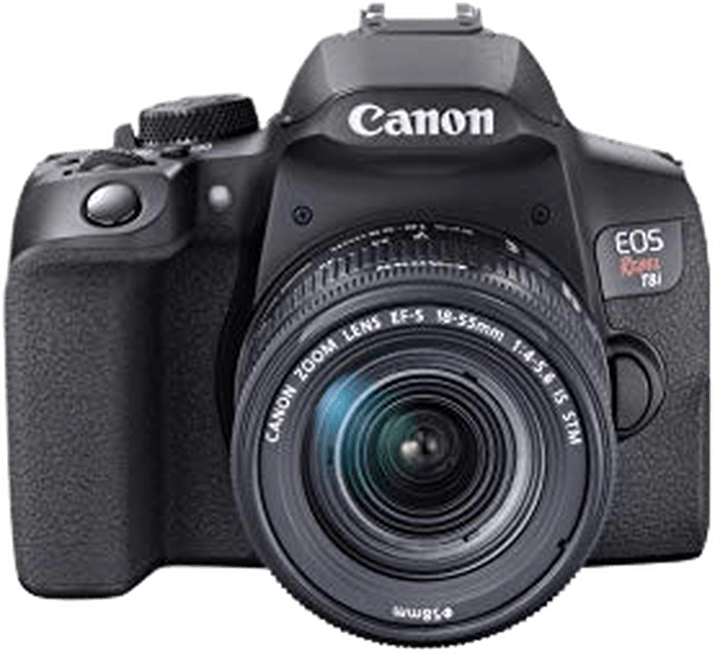
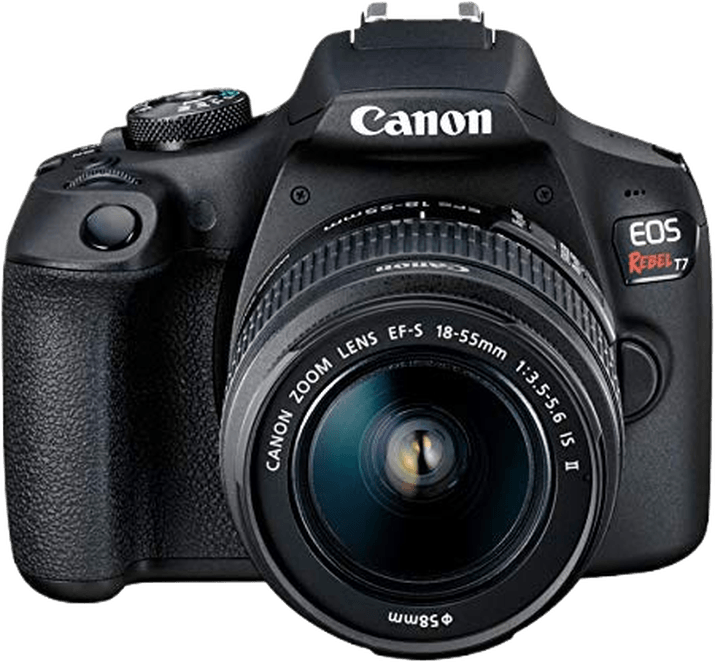
What Is the Best Entry Level DSLR?
The best entry-level DSLR should be easy to use and produce great results. You don’t want anything too complicated. But you want fabulous photos that feed your enthusiasm as you develop your skills.
Digital cameras can be complicated. But all the DSLRs on our list are easy to use.
We have included a couple of slightly more advanced models. But these cameras are still accessible for beginners. And they give you room to grow and improve your skills.
Image resolution, ISO, and autofocus are all important features in an entry-level DSLR. And some models even have video features for aspiring moviemakers.
If this technical jargon sounds complicated, go to the FAQ section at the end for more information.
Here’s a quick rundown of all the best entry-level DSLRs. Then we look at each camera in more detail in the following section.

- Impressive 24.1 MP (megapixel) CMOS sensor
- 45-point all cross-type AF system
- 4K / 24p video and vertical support
- Built-in Wi-Fi and Bluetooth technology
- Lightweight and easy-to-use design

- Quality 24.1 MP CMOS sensor
- Wide ISO range of 100 to 6,400 for low-light shots
- Optical viewfinder with 95% viewing coverage
- Built-in Wi-Fi, NFC technology, and 109-Point AF system
- Canon EF lens compatibility for versatility
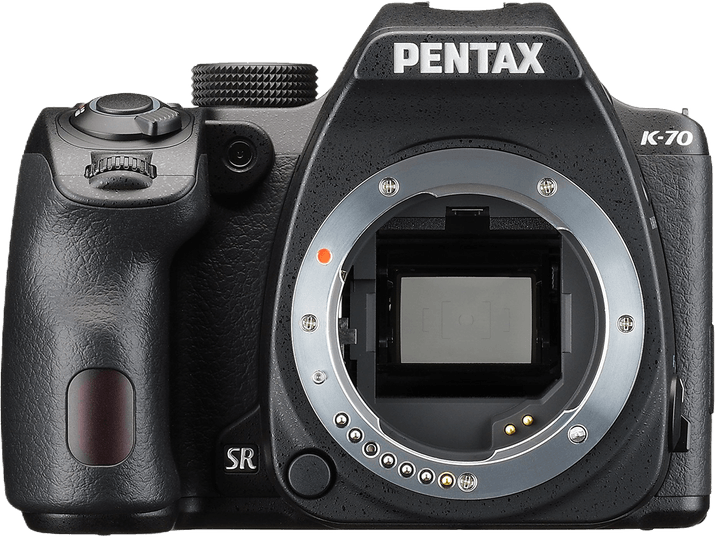
- All-weather design for versatile shooting
- High-sensitivity shooting with 24.24 MP sensor
- Advanced shake reduction and Pixel Shift Resolution
- Built-in Wi-Fi and 11-point AF system
- Compact body, easy to carry outdoors
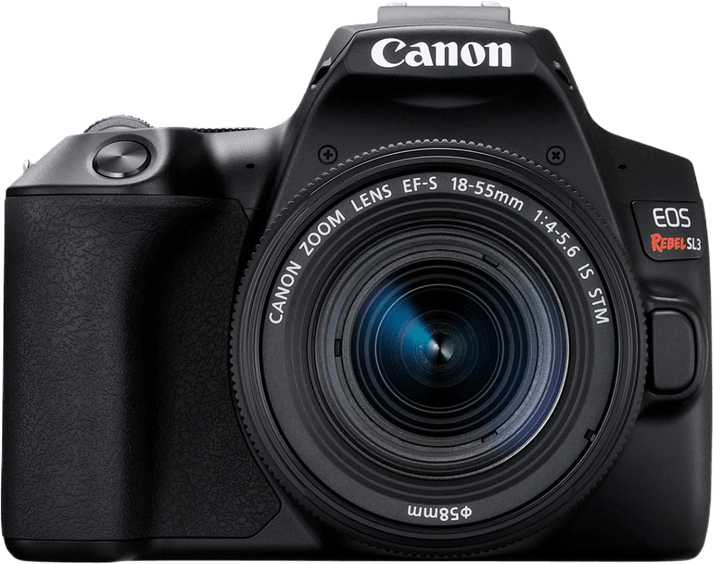
- Smallest, lightest EOS DSLR available
- Excellent 24.1 MP CMOS, DIGIC 8 processor
- 4K recording and dual Pixel CMOS AF
- Fun features like 4K time-lapse movies
- Vari-angle LCD for selfies and tough angles
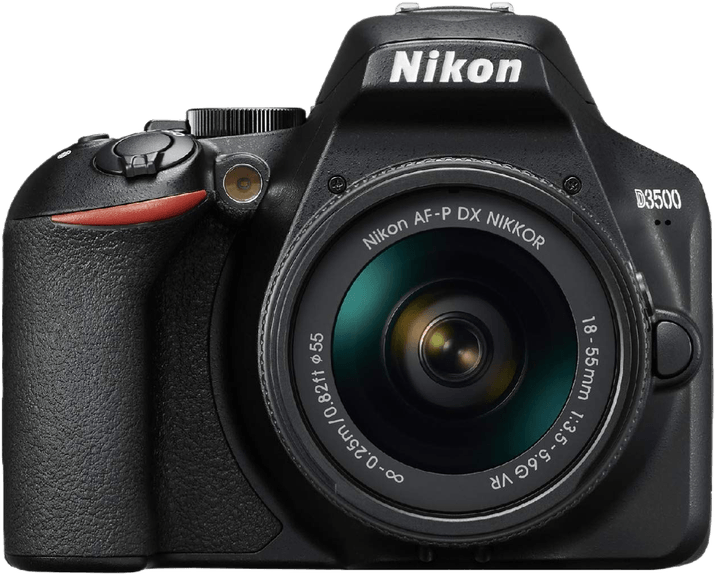
- Exceptional ease of use for beginners
- Image sensor 15x larger than smartphones
- High-quality 1080p Full HD videos with sound
- Seamless integration with Nikon's SnapBridge app
- Compact, comfortable design perfect for travel
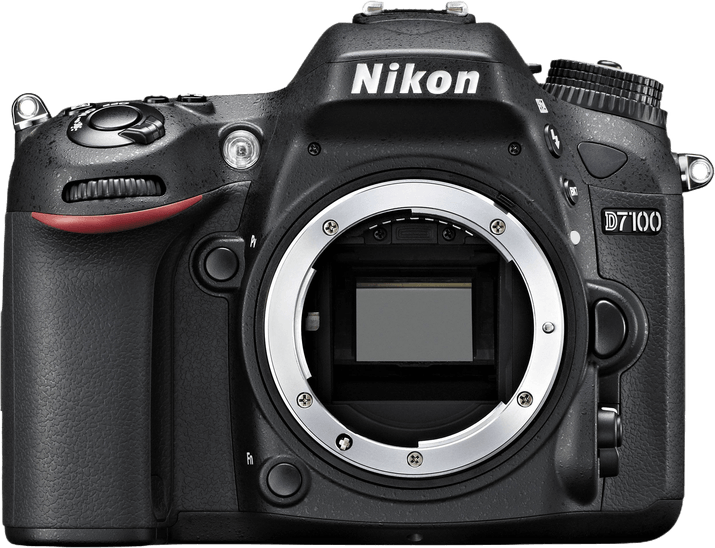
- Incredible 24.1 MP DX-format sensor
- Superior low-light performance
- Ultra-precise 51-point AF system
- Full HD 1080p video capabilities
- Optional wireless mobile connectivity
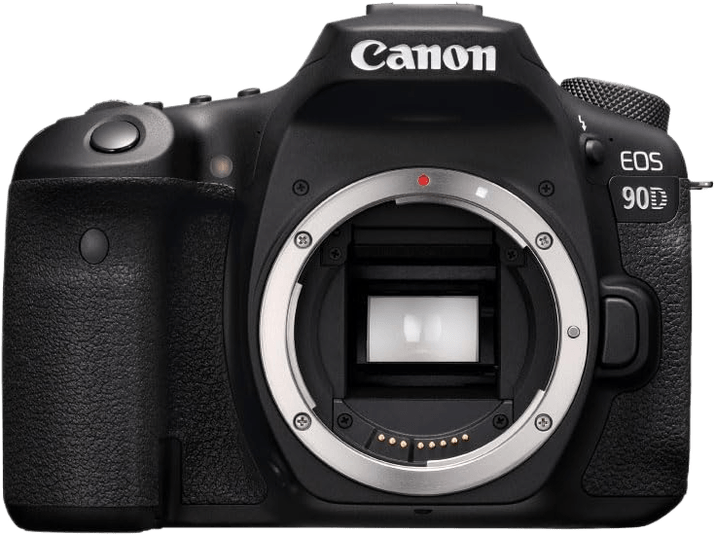
- 45-point all cross-type AF system
- Impressive face detection AF
- High-speed 10 fps (frames per second) continuous shooting
- 4K / 30p video and Full HD / 120p
- Webcam functionality with EOS Utility software
7 Best Entry-Level DSLRs
Now we’ll look at each entry-level DSLR in more detail. Only Canon, Nikon, and Pentax still have DSLRs on the market.
That means you don’t have the widest selection of cameras to choose from. But all the DSLRs on our list are fantastic options for beginner photographers.
1. Canon EOS Rebel T8i / 850D

| Released |
Released
2020
|
| Sensor Format |
Sensor Format
|
| Lens Mount |
Lens Mount
Canon EF/EF-S
|
| Megapixels |
Megapixels
24 MP |
| Autofocus Points |
Autofocus Points
45 |
| Maximum ISO (Native) |
Maximum ISO (Native)
25,600 |
| Frame Rate |
Frame Rate
7.5 fps |
| In-body Stabilization |
In-body Stabilization
|
| Max Video Resolution |
Max Video Resolution
|
| Other Key Features |
Other Key Features
Optical viewfinder, built-in flash, webcam functionality, Wi-Fi and NFC connectivity
|
| Best For |
Best For
Beginners who want an all-around camera with photo and video options
|
As an entry-level DSLR, the Canon EOS Rebel T8i is the total package. It’s fun and easy to use. It has a powerful sensor that produces stunning images. Plus, you can record videos and stream live.
The image sensor is a good place to start. The Rebel T8i has an APS-C CMOS sensor with a 24.1 MP resolution.
The sensor is backed by Canon’s DIGIC 8 processor. And the result of this technology is stunning images with vibrant colors and sharp details.
The camera also has a wide ISO range. The low limit is 100 ISO, which gives you maximum detail. And the standard high limit is 25,600 ISO in auto mode.
But the T8i‘s ISO can be expanded to 51,200 when you switch to manual. That gives you excellent low-light photography options.
With one of the best AF systems in its class, you can shoot all types of photos. It uses 45 cross-type AF points with good frame coverage. And it has reliable subject tracking for action and sports photos.
The AF system also has face and eye-detection features. This is perfect if you’re an aspiring portrait photographer. But it’s also a great help for street, sports, and documentary photography.
Budding filmmakers will also love the Rebel T8i. You can shoot videos with fabulous 4K resolution. And it has a frame rate of 24 fps, which is smooth enough for most beginners.
You can also record in a vertical format that is ideal for social media videos. And the EOS Rebel T8i can also be used as a webcam, which makes it a fantastic camera for live streaming.
All you need is a laptop and the Canon EOS Utility software. Then you can use the DSLR as a Full HD webcam for conference calls or live streaming on YouTube or Twitch.
Other fab features include Wi-Fi connectivity and a built-in flash. The battery life is excellent, allowing you to shoot for hours. And the LCD touchscreen flips out and rotates.
You can see why we think the T8i is the best all-around entry-level DSLR camera for beginners.
2. Canon EOS Rebel T7 / 2000D

| Released |
Released
2018
|
| Sensor Format |
Sensor Format
|
| Lens Mount |
Lens Mount
Canon EF-S
|
| Megapixels |
Megapixels
24.1 MP |
| Autofocus Points |
Autofocus Points
9 |
| Maximum ISO (Native) |
Maximum ISO (Native)
6,400 |
| Frame Rate |
Frame Rate
3 fps |
| In-body Stabilization |
In-body Stabilization
|
| Max Video Resolution |
Max Video Resolution
|
| Other Key Features |
Other Key Features
Remote shooting, built-in flash, webcam functionality, built-in Wi-Fi and NFC connectivity
|
| Best For |
Best For
Beginners looking for an affordable DSLR with a kit lens
|
The Canon EOS Rebel T7 is a bargain for beginner photographers. And it’s an absolute steal with a kit lens included.
It’s one of the older models in Canon’s EOS Rebel range. That means it doesn’t have all the features of the newer T8i. But it still has excellent photography specs.
This Canon DSLR is armed with an APS-C CMOS sensor. And it has a more-than-healthy resolution of 24.1 MP.
The camera has an older DIGIC 4 processor. So the image quality doesn’t quite match the Rebel T8i. But you can still expect fantastic images for a camera at this level.
The AF system is simple compared to newer models. It only has nine focus points concentrated near the center of the frame. But if your subjects stay within that area, it is fast and reliable.
The T7 also has video capture capabilities. The maximum resolution is Full HD. There’s no 4K. But Full HD is good enough for casual movie making.
The 30 fps frame rate also gives you footage with smooth playback. So it’s a great camera for young wannabe filmmakers.
A great selection of shooting modes means you can master any photography niche. You have modes for portraits, landscapes, and sports.
Plus, the optical viewfinder makes composition easy. You see right through the lens. So there’s no delay or technical errors.
The built-in Wi-Fi connectivity allows you to share photos with other devices. And you can link it to your smartphone for remote shooting. This is ideal if you need an affordable vlogging camera.
It also doubles as a webcam. So it’s a streaming camera too. And it’s also one of the most affordable DSLR cameras you can buy brand new.
The EOS Rebel T7 offers a fantastic starting point for beginners. Whether it’s for inexperienced youngsters or tech-shy adults, this is still a top DSLR.
3. Pentax K-70

| Released |
Released
2016
|
| Sensor Format |
Sensor Format
|
| Lens Mount |
Lens Mount
Pentax KAF2
|
| Megapixels |
Megapixels
24 MP |
| Autofocus Points |
Autofocus Points
11 |
| Maximum ISO (Native) |
Maximum ISO (Native)
102,400 |
| Frame Rate |
Frame Rate
6 fps |
| In-body Stabilization |
In-body Stabilization
|
| Max Video Resolution |
Max Video Resolution
|
| Other Key Features |
Other Key Features
Shake reduction mechanism, pixel-shift resolution mode, weather-sealed body, built-in Wi-Fi
|
| Best For |
Best For
Adventurous beginners who love the outdoors
|
Pentax has built its reputation on making rugged, durable cameras. And even though the Pentax K-70 is an entry-level DSLR, it lives up to that reputation.
The camera body is strong and tough. And it’s dustproof and fully weather-sealed for outdoor photography in any weather.
This Pentax DSLR isn’t just a tough brick, though. It’s filled with excellent photography features beginners will love.
The APS-C sensor has a 24.2 MP resolution. And the processor has an accelerator unit for even better performance. You get vivid images any photographer would be happy with.
You also have an option for even better images with a pixel-shift resolution mode. The camera takes four exposures simultaneously and puts them together as a composite.
You need a photography tripod for the best results. But the final product is an incredible high-resolution camera image.
The K-70 has the widest ISO range of any entry-level DSLR. You can push the ISO setting all the way up to 102,400.
You experience some digital noise at that high ISO level. But the camera gives you excellent flexibility in difficult lighting.
Low-light performance is improved even more by its anti-shake mechanism. This counteracts camera shake, allowing you to shoot at slower shutter speeds.
You have less risk of blur when shooting handheld. And it gives you more control over your exposure settings.
You also have a rotating LCD display to help you shoot at any angle. And the Wi-Fi connectivity is handy for sharing images with other devices.
Plus, you can use your smartphone as a remote control. That’s great for self-portrait photographers or snapping animals in the wild.
You don’t get the same extensive lens selection when using Pentax cameras. They can’t compete with Nikon and Canon in terms of freedom of choice.
But Pentax does produce exquisite lenses for its cameras. You can see our choices of the best Pentax lenses to use.
The K-70 is the most durable entry-level DSLR. The tough, weather-sealed body makes it the perfect choice for beginners who love the outdoors.
It’s one of the heavier options. But the battery life is outstanding. And it’s compact enough for any hiking camera backpack.
4. Canon EOS Rebel SL3 / 250D

| Released |
Released
2019
|
| Sensor Format |
Sensor Format
|
| Lens Mount |
Lens Mount
Canon EF/EF-S
|
| Megapixels |
Megapixels
24 MP |
| Autofocus Points |
Autofocus Points
9 |
| Maximum ISO (Native) |
Maximum ISO (Native)
25,600 |
| Frame Rate |
Frame Rate
5 fps |
| In-body Stabilization |
In-body Stabilization
|
| Max Video Resolution |
Max Video Resolution
|
| Other Key Features |
Other Key Features
Eye-detection AF, rotating touchscreen, built-in flash, built-in Wi-Fi and Bluetooth
|
| Best For |
Best For
Beginners looking for a solid all-rounder at a reasonable price
|
The Canon EOS Rebel SL3 is one of the most popular cameras from Canon’s Rebel range. That’s because it’s a solid all-around DSLR.
It’s easy to use and has a reasonable price tag. And with quality image capture and 4K video recording, it has everything a beginner needs to get going.
Its imaging hardware is similar to the Rebel T8i. There’s a CMOS sensor with a 24.1 MP resolution. And the camera has a DIGIC 4 processor.
The image quality is the top highlight for this camera. The color rendition is true to life. And the images are clear with sharp details.
Canon’s Dual Pixel CMOS AF system is famous in the photography world. The system only has nine focus points. But it offers good frame coverage. Plus, it has eye detection for more accurate focus.
The SL3 also gives you a full multimedia experience. You can capture sharp 4K videos. And the 24 fps frame rate is smooth enough for casual recording. Your videos will pop when up on social media.
The Creative Assist feature helps you master the art of photography. It gives you tips and pointers.
You can change settings such as brightness and contrast. And you can see the results in real time. So it’s the perfect leg up for enthusiastic learners.
Sharing images is quick and easy with the built-in Wi-Fi and Bluetooth. You have an optical viewfinder for precision composition. And the rotating touchscreen helps you get shots from awkward angles.
Beginners can’t go wrong with the EOS Rebel SL3. The camera gives you a helping hand when you need it. And you will create beautiful photos and videos.
It has handy features that make photography easier. And it’s definitely worth the price!
5. Nikon D3500

| Released |
Released
2018
|
| Sensor Format |
Sensor Format
|
| Lens Mount |
Lens Mount
Nikon F
|
| Megapixels |
Megapixels
24 MP |
| Autofocus Points |
Autofocus Points
11 |
| Maximum ISO (Native) |
Maximum ISO (Native)
25,600 |
| Frame Rate |
Frame Rate
5 fps |
| In-body Stabilization |
In-body Stabilization
|
| Max Video Resolution |
Max Video Resolution
|
| Other Key Features |
Other Key Features
Guide mode, optical viewfinder, long-lasting battery life
|
| Best For |
Best For
Photography purists who want to learn the ropes with a reliable camera
|
The Nikon D3500 was considered the king of beginner cameras for many years. Unfortunately, Nikon has now discontinued the DSLR. But you can still buy it used or renewed.
To start with, anyone can pick up this camera and start shooting. The auto mode gives you the freedom to start snapping straight away.
You also have other modes for specific types of photography. And there’s a guide mode to help you get started.
The sensor has a 24.2 MP resolution, giving you beautiful images with well-saturated colors and clear details. It also has a wide ISO range with very little noise until you reach the very top of the ISO scale.
The autofocus is fast and reliable. And it has subject tracking that keeps targets in focus when they move. That’s great for everything from sports to street photography.
The video capture is limited to Full HD, not 4K. But the video footage is smooth and sharp.
You also get a 5 fps burst mode for action photography. It isn’t the fastest burst in the world. But it helps you capture those blink-and-you-miss-it moments.
Composition is easy with the classic optical viewfinder. There’s a built-in flash for night photography. And the manual controls are well situated on the body for easy adjustments.
It also has Bluetooth wireless connectivity. And you can connect it to the Nikon SnapBridge app to help transfer images or use your phone as a camera remote.
Nikon discontinuing the D3500 makes the mind boggle. They had a DSLR that delivered everything beginners were asking for.
But while you can’t buy it brand new, used and renewed options offer an affordable way to buy a fantastic beginner camera. We still recommend it as one of the best entry-level DSLRs.
6. Nikon D7100

| Released |
Released
2013
|
| Sensor Format |
Sensor Format
|
| Lens Mount |
Lens Mount
Nikon F DX
|
| Megapixels |
Megapixels
24.1 MP |
| Autofocus Points |
Autofocus Points
51 |
| Maximum ISO (Native) |
Maximum ISO (Native)
6,400 |
| Frame Rate |
Frame Rate
6 fps |
| In-body Stabilization |
In-body Stabilization
|
| Max Video Resolution |
Max Video Resolution
|
| Other Key Features |
Other Key Features
Face-detection AF, 100-shot buffer in burst mode, slow-motion video capture, weather sealing
|
| Best For |
Best For
Beginners who want a new Nikon DSLR for photography
|
The Nikon D7100 is another fantastic DSLR for beginners. It’s slightly more advanced than the D3500 in some areas. And you can still buy it brand new.
It’s a great DSLR for photography specialists. And it gives you plenty of scope for growth.
This Nikon DSLR has a 24 MP APS-C sensor and an EXPEED 3 image processor. And the image quality is fantastic even though it’s an older model. Its shots compete with those from newer cameras.
The ISO range is limited, with just a 100 to 6,400 range. Most photographers don’t need much more than this. But more flexibility is handy for low-light photography.
But the D7100 does top its rivals in the autofocus department. It uses 51 focus points that give you near full frame coverage. And it has face-detection capabilities and reliable subject tracking.
You can record Full HD videos with this camera. The lack of 4K video resolution is disappointing. But the video recording has full-time AF functionality.
There’s also a built-in stereo mic for sound recording. And there are ports for external DSLR microphones. It also has two SD card slots. So you never run out of memory.
Finally, the D7100 is a great choice for photographers who love the outdoors. It has a magnesium alloy skeleton. And the outer body is completely weather sealed.
7. Canon EOS 90D

| Released |
Released
2019
|
| Sensor Format |
Sensor Format
|
| Lens Mount |
Lens Mount
Canon EF/EF-S
|
| Megapixels |
Megapixels
33 MP |
| Autofocus Points |
Autofocus Points
45 |
| Maximum ISO (Native) |
Maximum ISO (Native)
25,600 |
| Frame Rate |
Frame Rate
10 fps |
| In-body Stabilization |
In-body Stabilization
|
| Max Video Resolution |
Max Video Resolution
|
| Other Key Features |
Other Key Features
Eye-detection AF, top LCD display, rotating screen, webcam functionality, Wi-Fi and Bluetooth connectivity
|
| Best For |
Best For
Photographers wanting to advance to the next level
|
The Canon EOS 90D is the most advanced camera on our list. It isn’t exactly an entry-level DSLR. But it offers a great opportunity to develop your skills and advance as a photographer.
Its higher price tag means you have to be invested. But you can achieve great things at an early stage in your development.
Like all the DSLRs on our list, this Canon has an APS-C sensor. But unlike the others, it has a resolution of 32.5 MP. That’s not just huge for entry-level cameras. That’s huge for any APS-C camera.
32.5 MP isn’t just an abstract number. The result is outstanding image quality that’s worthy of print publications.
The colors are bright and vibrant yet realistic. And the dynamic range is impressive for an APS-C camera.
It also has an advanced AF system. It uses 45 cross-type focus points with near full frame coverage.
And it has eye-detect features that are quick to find your subject. Plus, there’s intelligent subject tracking for moving scenes.
The video specs are some of the best of any DSLR. You get 4K video resolution with a 30 fps frame rate for smooth playback.
The AF is just as reliable in video mode. And you have options for Full HD slow-motion videos.
The pentaprism optical viewfinder gives you a clear and accurate view for composing photos. The LCD screen flips out and rotates. And there’s a top LCD to help you get the perfect settings.
The EOS 90D is the best APS-C DSLR there is. It isn’t the best choice for absolute beginners. But the 90D offers an opportunity to take the next step.
A photographer who knows the basics will have a good time with it. And the results will be beyond anything they have yet experienced.
FAQs About the Best Entry-Level DSLRs
Choosing an entry-level camera is not something to take lightly. A wrong decision could mean a big waste of money. And it could have the added effect of killing your enthusiasm for photography.
We don’t want that to happen! That’s why we’ve answered the hottest questions about entry-level DSLR cameras.
Are DSLRs Still Good Cameras for Beginners?
DSLR cameras are definitely still fantastic options for beginners. But we have to be realistic. DSLRs are on the way out.
All the major camera brands (except Pentax) have stopped developing DSLR models and now focus solely on mirrorless cameras.
But despite manufacturers turning away, there are still some fantastic DSLR cameras on the market. Their simple controls and image production powers make them ideal entry-level cameras.
The DSLR is the direct digital descendant of the SLR 35mm camera. They have digital features and produce digital images. But the photography fundamentals remain the same.
You balance the exposure settings and release the shutter to produce an image. That’s why DSLR cameras are still a great place for beginners to start.
DSLRs from Nikon and Canon also have huge collections of compatible lenses. Using new lenses is a great way to develop as a photographer.
Canon’s range of EF lenses has glass for any type of photography. And Nikon’s F line has the biggest lens catalog of any manufacturer.
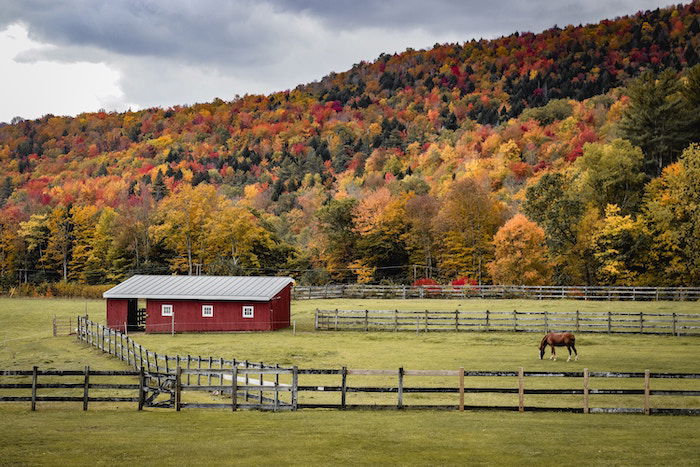
What Are the Most Important Features of an Entry-Level DSLR?
Digital cameras can be complicated machines, especially if you’re new to photography. Here are the main features you should look at when buying a DSLR camera.
Sensor Resolution
Resolution determines the power of the camera’s sensor. It’s counted in megapixels (MP), and it plays a big role in image quality. As a general rule, the higher the MP count, the better the image quality.
All the cameras on our list have APS-C sensors. These are smaller than full frame sensors. But it can still have MP counts high enough to produce gorgeous images.
A 24 MP resolution is fantastic for an APS-C entry-level DSLR. Anything above 20 MP gives you good images. But 24 MP gives you images you can really be proud of.
ISO
ISO determines how sensitive the camera sensor is to light.
The higher the ISO number, the more sensitive the sensor is to light. That means you can take pictures in lower light. But the higher sensitivity does come at a cost.
Shooting at a high ISO setting can have a negative effect on image quality. You might experience digital noise. This is a grainy effect that reduces the vitality and detail in your images.
We recommend shooting at low ISOs when possible. But a DSLR with a wide ISO range does give you more freedom when shooting in different lighting conditions.
Autofocus
All photographers need fast and reliable autofocus (AF). It’s one less thing the photographer has to worry about to get the perfect shot. But how can you judge a camera’s AF without using it?
The number of focus points gives you a good indication of the AF system’s level.
More focus points mean better accuracy. And a higher number also suggests the AF system covers more of the frame, letting it detect subjects at the edges.
Subject tracking is another important part of an AF system. The camera tracks your subject as they move across the frame. It keeps them in focus, letting you capture the action with accuracy.
Face and eye detection are other handy AF features. The camera can detect your subject’s face and eyes and lock focus on them. This is a huge benefit when photographing human subjects.
Wireless Connectivity
Many modern cameras have built-in Wi-Fi, Bluetooth, or NFC connectivity. And beginner DSLRs are no different.
The wireless connectivity allows your camera to communicate with other devices without using a cable. You can then transfer images and other media from your camera to your smartphone.
It’s quick and painless. And it makes it even easier to post your photos on social media.
Video Features
DSLR cameras aren’t renowned for their video production capabilities. But some entry-level DSLR cameras do have exciting video features.
Not all the cameras on our list can shoot video. But some, like the Canon EOS Rebel T8i, can record high-quality video.
If you want video in your DSLR, look for a camera with 4K video resolution. Full HD quality might be alright for casual video recording. But you need 4K to keep up with other content creators.
Frame rate is also important. This is measured in frames per second (fps). And a fast frame rate gives you smoother video.
Anything between 24 and 30 fps is good for most people. But fast rates like 120 fps allow you to record slow-motion videos.
You can see our recommendations for the best DSLRs for video.
Is Buying a Bundle Better Value?
No. We advise against bundles when buying a new camera. The bundle price may be cheaper than buying individual items. But you’ll have a load of photography accessories you’ll never use.
Also, many bundle items are low-grade and cheap. A bundle is designed to make you feel like you’re getting more for your money.
But most of the time, stores are unloading stuff they can’t sell. You end up with a camera that wasn’t any cheaper and loads of useless trinkets.
But we do recommend buying entry-level cameras with a kit lens. Buying a camera with a lens saves you money. And it means you can start shooting after only one purchase.
Are Kit Lenses Any Good?
Kit lenses aren’t the manufacturer’s best lenses. But they usually have good optical quality and are versatile. That’s ideal for beginners.
They are usually zoom lenses with a standard focal length. And sometimes the focal length will be from standard to short-telephoto.
But kit lenses can only take you so far on your photography journey. They are often mid-quality jack-of-all-trades lenses.
That’s great when you’re finding your feet. But as you develop a distinct style, you’ll need lenses that help you achieve more specific photography goals.
Thankfully, DSLRs from Canon and Nikon have the widest selection of compatible lenses. There are wide-angle lenses for landscape and real estate photography.
And there’s a wide range of portrait lenses for Nikon and Canon. Plus, you have zoom lenses for sports and wildlife photography.
As mentioned, we do recommend buying entry-level cameras with a kit lens. This saves you money. And you can start shooting right away.
Conclusion: The Best Entry Level DSLRs
An entry-level DSLR can be a solid choice for beginners. DSLRs allow you to learn the basics and develop photography skills without distracting you with unnecessary features.
They look and feel like a camera should. And any user can pick them up and start shooting. All the cameras on our list deliver results beginners can be proud of.
But the Canon EOS Rebel T8i is the best entry-level DSLR for beginners. It even has advanced features for sophisticated multimedia production. You can snap stunning images. And you can record 4K videos. It has everything a beginner needs and more!


